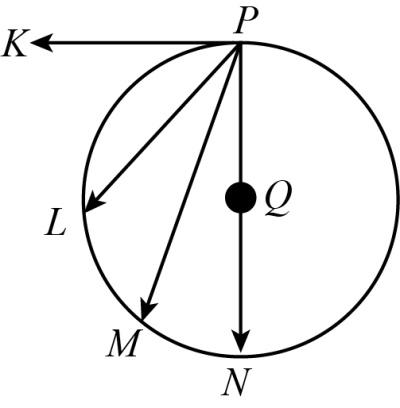Question
Question: In the figure the charge Q is at the center of the circle. Work done is maximum when another charge ...
In the figure the charge Q is at the center of the circle. Work done is maximum when another charge is taken from point P to

A P
B K
C M
D N
Solution
This question is based on the equipotential surface. The equipotential surface is the locus of points in which all the potential remains the same. So, we can find the maximum work where the point is outside the equipotential surface.
Complete step by step answer:
It is given in the question that the charge Q is placed at the center of the circle. So, the charge forms an equipotential surface around it. On the equipotential surface, there are three points L, M, N lying on the electric field. We have to find the maximum work done when the charge is taking from the point P.
Now, the expression of the equipotential surface is given as,
v=rkQ
Here, V is the electric potential, Q is the charge of magnitude and r is the point distance away from the point charge.
On an equipotential surface, the potential remains the same. If we move from point P to point L the potential remains the same, similarly for point M and N the potential remains the same because the points lie on the equipotential surface.
So, the work done becomes zero when we move from P to points L, M and N.
Now, if we move from point P to point K, then the work done becomes positive. The potential at point K is less than the potential at point P. So, the work done has become positive.
**Thus, the correct option is (B).
Note:
These types of questions can be answered with basic understanding of the situation. Since any gravity is not present in outer space the surface tension will be an unbalanced force. Students should be able to make this kind of assertion and then the question can be easily solved by them.
